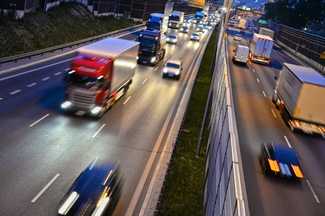Are Automated Trucks Safer For Our Highways?
 With numerous companies exploring the possibility of automated vehicles, significant attention is now being paid to the long-haul trucking industry. If self-driving 18-wheelers are tasked with hauling goods and materials across the United States with little driver interaction, does this make our nation’s highways safer … or deceptively dangerous?
With numerous companies exploring the possibility of automated vehicles, significant attention is now being paid to the long-haul trucking industry. If self-driving 18-wheelers are tasked with hauling goods and materials across the United States with little driver interaction, does this make our nation’s highways safer … or deceptively dangerous?
Google is testing self-driving trucks in Atlanta to travel between their facilities. Uber has started to deliver freight across Arizona highways with autonomous trucks. Embark has successfully completed a coast-to-coast run in a self-driving truck earlier this year. Tesla recently unveiled its electric semi that is dominated by autopilot driving aids. Technology is progressing at a significant pace with milestone stacking upon milestone. But are the right steps being taken to ensure the safety of other drivers on our roadways?
The recent fatality in Arizona has caused many opponents of this technology to raise concerns. An Uber vehicle operating in autonomous mode – with a safety driver behind the wheel – struck and killed a pedestrian.
What Are The Dangers?
As truck accident attorneys in Los Angeles, we know that big rig accident are one of the most catastrophic and deadly vehicle collisions on the highway. Due to the size, speed and unwieldy nature of these huge vehicles, a truck can very nearly destroy any other vehicle on the road. When the debate about autonomous 18-wheelers comes up, many individuals have strong feelings. As noted in a USA Today piece, V. Paul Herbert, a veteran truck driver turned truck safety expert with the Western Motor Carrier Safety Institute, makes a simple statement. “An autonomous big rig will never be able to possess the insight or reasoning capability of a well-trained professional truck driver.”
Hardware Or Software Problems?
While vehicles have seen safety improvements – lane assist, rear-view camera, brake assist, etc. – over the course of the last decade computer programmers are still facing issues with developing an algorithm that behaves like a safe, experienced driver.
Many opponents of autonomous vehicles point to “the trolley problem,” a thought experiment that forces an individual to decide whether to pull a lever that sends a trolley down a path that will result in injuries to numerous people or down a path that will result in a single person’s death.
Additionally, programmers will need the vehicle’s sensors to differentiate between a child on all fours versus a small animal, a tunnel entrance versus shadows on a wall, and so on. As the technology makes incremental improvements, are other drivers on the road safer?
Unfortunately, real-world data comparing autonomous and driver-operated vehicles is not readily available. Large insurance companies and federal regulators, however, are monitoring companies working on this technology. It will be necessary to find a balance between fostering technological growth and stemming the tide of traffic fatalities.